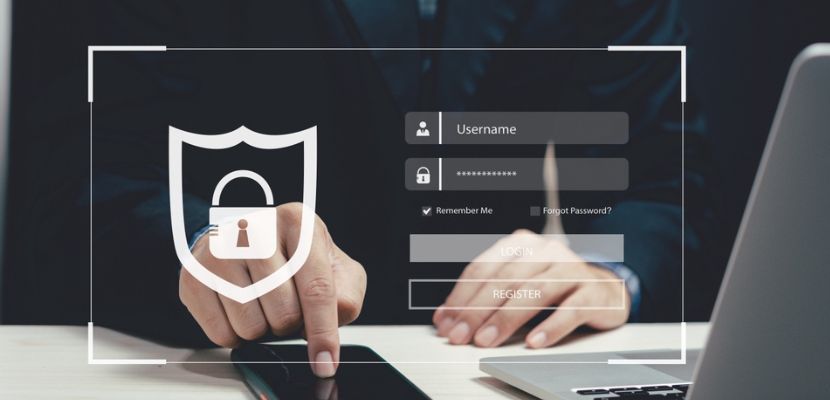Authentication is the process of verifying the identity of a user or system. It ensures that access is granted only to those who are authorized. Common methods include passwords, biometrics, and multi-factor authentication.

What Is Authentication?
Authentication is the process by which a system verifies the identity of a user or entity attempting to access it. The process typically involves presenting credentials, such as a username and password, that are checked against a stored set of valid credentials. The system confirms the identity and grants access if the provided credentials match the stored ones.
Authentication can involve various methods and technologies, including biometric verification (such as fingerprint or facial recognition), security tokens, and multi-factor authentication (MFA), where multiple forms of verification are required. Effective authentication is critical for ensuring that only authorized individuals can access sensitive data and systems, thereby protecting against unauthorized access and potential security breaches.
Authentication vs. Authorization
Authentication is the process of verifying the identity of a user or entity, ensuring that the person or system is who they claim to be. It answers the question, "Who are you?"
Authorization, on the other hand, occurs after authentication and determines what an authenticated user is allowed to do. It answers the question, "What are you allowed to do?"
While authentication confirms identity, authorization controls access to resources based on that confirmed identity, ensuring that users have the appropriate permissions for their role or status.
The Importance of Authentication in Cybersecurity
Authentication is a cornerstone of cybersecurity, serving as the first line of defense in protecting sensitive information and systems from unauthorized access. By verifying the identity of users and entities, authentication ensures that only legitimate users can access critical resources, preventing data breaches and cyberattacks.
Robust authentication methods, such as multi-factor authentication and biometric verification, significantly enhance security by adding layers of protection that are difficult for attackers to bypass. As cyber threats become increasingly sophisticated, the importance of reliable authentication processes grows, safeguarding not only personal and organizational data but also maintaining trust in digital interactions and services.
How Does Authentication Work?
Authentication works through a series of steps designed to verify the identity of a user or entity attempting to access a system. Here's an outline of the typical authentication process:
- User request. The user initiates the authentication process by attempting to access a system, application, or service.
- Credential submission. The user submits their credentials, which may include a username and password, a biometric scan, or a security token, to the system for verification.
- Credential transmission. The submitted credentials are securely transmitted to the authentication server. This transmission is often encrypted to protect the credentials from interception.
- Credential verification. The authentication server compares the submitted credentials against the stored credentials in its database. If the credentials match, the user's identity is confirmed.
- Response generation. Based on the verification results, the authentication server generates a response. If the credentials are valid, the server grants access to the user. If the credentials are invalid, the server denies access and may prompt the user to retry or provide additional verification.
- Access granted or denied. The system receives the authentication server's response and either grants or denies access to the user. If access is granted, the user can proceed to use the system's resources according to their permissions.
- Session initiation. Upon successful authentication, a session is initiated, providing the user with access for a specific duration or until they log out. Session management ensures continuous verification and security during the user's interaction with the system.
Authentication Types
Authentication types vary in complexity and security, each offering different methods to verify a user's identity. Here are some common types of authentication.
Password-Based Authentication
Password-based authentication is the most common and widely used method. Users create a unique password that, when combined with a username, allows them to access a system. The security of this method relies heavily on the strength and confidentiality of the password. Weak or reused passwords can be easily guessed or stolen through phishing attacks, making this method less secure unless combined with other measures like password managers or multi-factor authentication.
Biometric Authentication
Biometric authentication uses unique physical characteristics of the user, such as fingerprints, facial recognition, iris scans, or voice patterns, to verify identity. This method is highly secure because these biometric traits are difficult to replicate or steal. Biometric systems typically involve a sensor or scanner to capture the biometric data and compare it against stored templates in the system's database. While offering strong security, biometric authentication can raise privacy concerns and may be less effective in cases where physical traits change or sensors fail.
Multi-Factor Authentication (MFA)
Multi-factor authentication (MFA) enhances security by requiring users to present two or more independent credentials before gaining access. These credentials typically fall into three categories: something you know (password), something you have (security token or mobile device), and something you are (biometric data). By combining multiple factors, MFA significantly reduces the risk of unauthorized access, as compromising more than one type of credential is considerably more challenging for attackers.
Token-Based Authentication
Token-based authentication involves generating a unique token for each session, which the user must present to access the system. These tokens can be physical devices, like hardware tokens, or digital tokens generated by authentication applications. Tokens often have a limited lifespan and are used in conjunction with other credentials, providing an additional layer of security. This method is particularly effective in preventing replay attacks, where attackers try to reuse intercepted authentication data.
Certificate-Based Authentication
Certificate-based authentication uses digital certificates issued by a trusted certificate authority (CA) to verify a user's identity. The certificate contains the user's public key and other identifying information, and it is stored on the user's device. When accessing a system, the user presents the certificate, which is validated against the CA's records. This method provides strong security due to the cryptographic nature of certificates and is commonly used in secure communications and enterprise environments.
Single Sign-On (SSO)
Single sign-on (SSO) allows users to authenticate once and gain access to multiple systems or applications without re-entering credentials. This method improves user convenience and reduces the burden of managing multiple passwords. SSO works by establishing a trusted relationship between the primary authentication system and other connected systems. While enhancing user experience and productivity, SSO also centralizes authentication management, making it easier to implement robust security measures across all connected services.
Authentication Use Cases

Authentication is essential in various scenarios to ensure that only authorized users access systems and data. Here are some common use cases for authentication.
Online Banking
Authentication is critical in online banking to protect sensitive financial information and transactions. Banks typically use a combination of password-based authentication, multi-factor authentication (MFA), and sometimes biometric verification. For example, a user may log in with a password and then receive a one-time passcode (OTP) on their mobile device to complete the authentication process. This layered approach helps prevent unauthorized access and fraud, safeguarding both the user's account and the bank's assets.
Corporate Networks
Authentication ensures that only authorized employees can access the company's internal network and resources in corporate environments. Common methods include password-based logins, MFA, and sometimes certificate-based authentication for secure communication. Employees might use a combination of a secure password, a security token or mobile app for OTPs, and a smart card or digital certificate to access sensitive data and systems. This protects the company's intellectual property and confidential information, and ensures compliance with regulatory requirements.
Healthcare Systems
Healthcare systems require robust authentication to protect patient data and ensure compliance with regulations like HIPAA. Healthcare providers use various methods such as password-based logins, biometric authentication (like fingerprint or facial recognition), and smart cards. For instance, a doctor accessing electronic health records (EHR) may use a password and fingerprint scan to ensure only authorized personnel can view or modify patient information. This protects patient privacy and prevents unauthorized access to sensitive medical data.
Ecommerce Platforms
Ecommerce platforms use authentication to secure user accounts and transactions. Customers typically log in with a username and password, and many platforms now implement MFA to enhance security. For instance, after entering their password, a customer might receive an OTP on their mobile device to complete the login process. This prevents unauthorized access to user accounts and reduces the risk of fraudulent transactions, protecting both the customer and the ecommerce platform.
Mobile Applications
Mobile applications often require authentication to secure user data and personalize the user experience. Common methods include password-based logins, biometric authentication (such as fingerprint or facial recognition), and OAuth-based single sign-on (SSO) for seamless access. For example, a social media app might use facial recognition to quickly and securely log users in, enhancing convenience while maintaining security. This ensures that only the legitimate user can access their personal data and account settings.
Government Services
Government services, such as online portals for tax filing, social security, and voting systems, require robust authentication to ensure that only eligible individuals can access and use these services. Governments often use a combination of password-based authentication, MFA, and sometimes biometric verification. For instance, a citizen accessing an online tax filing service might need to log in with a password and then authenticate via a fingerprint scan or OTP. This ensures the security and integrity of sensitive government data and services, preventing fraud and unauthorized access.